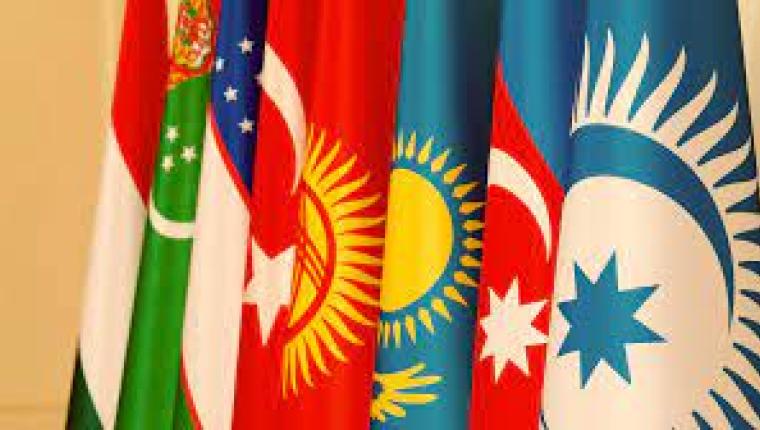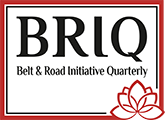
Belt and Road Initiative Journal calls for articles for the Fall 2024 issue on “Belt and Road Initiative and Organization of Turkic States”.
Belt and Road Initiative (BRI), also known as Silk Road of the twenty first century, wasintroduced by President Xi Jinping of the People’s Republic of China on September 7, 2013, atNazarbayev University in Astana, the capital of Kazakhstan. It is made up of two main parts:Maritime Silk Road and Silk Road Economic Belt. BRI aims to establish six main economic corridors. One of these corridors is China Central Asia West Asia Economic Corridor (CCWAEC),which begins in China’s Sinciang Uygur Autonomous Region and spans 17 West Asian nations,including Iran, Saudi Arabia, and Türkiye, and five Central Asian nations, namely Kazakhstan, Kyrgyzstan, Tajikistan, Uzbekistan, and Turkmenistan.
Central Asian Turkic States holds a strategic position for Belt and Road Initiative, which marked its 10th anniversary in September 2023. Organization of Turkic States (OTS), which wasfounded in 2019 concurrently with the emergence of the multipolar world, is composed ofAzerbaijan, Kazakhstan, Kyrgyzstan, Uzbekistan, and Türkiye as members, and Turkmenistan,Hungary, and Turkish Republic of Northern Cyprus as observer members. Under BRI, transportationand energy corridors will run across Turkic states in this region.
In the framework of multilateral international cooperation shaped by Belt and Road Initiativein the developing world, Organization of Turkic States is regarded as a significant geostrategic andgeopolitical platform. It is anticipated that Organization of Turkic States and its members’ potentialcollaboration and partnerships with other nations as active participants in BRI will bring about major changes in the international scene.
As the axis of power in the international order is shifting from West to East, Türkiye is geostrategically positioned at the very middle. Türkiye’s location is thought to hold the key toopening up new formations and shifting equilibriums in the region. Türkiye and OTS, as the gateway of Asia to Europe, are considered to be of great importance for the success of Belt and RoadInitiative.
In this regard, Turkey is viewed as a possible member of the growing BRICS and is a Dialogue Partner in Shanghai Cooperation Organization (SCO), which includes of Russia, Iran, Pakistan, India, China, some of Central Asian Republics, and other countries. Türkiye is a member of Organization of Turkic States along with some of Central Asian Republics, which have close political, economic, and security ties to Russia as well as an expanding cooperation based on Beltand Road Initiative with China.
On the other hand, United States of America, having gained significant influence after the collapse of Soviet Union, has been sidelined in the region by the catalyzed Russia China partnership that has been developing since the early 2000s. It is currently known that US is concentrating on an Asia Pacific based strategy to counter China, which it regards as its primary adversary in both international politics and the economy. Plans for NATO’s expansion towards Asia Pacific region and formations such as QUAD and AUKUS have been put into practice as implementations of this strategy. Severing China’s ties to Europe is regarded as a crucial component of USA policy. In this framework, preventing the development of BRI is also among USA objectives.
Overall, these developments are objectively seen to have led to a convergence of the national interests of states in Asia, particularly Türkiye China, Russia, Iran, Iran, Azerbaijan and Central Asian Turkic Republics.
BRIQ Belt and Road Initiative Journal welcomes articles, essays and book reviews on the following subjects, in both Turkish and English, based on the above framework.
- The position of Central Asia and Turkic States in a multipolarized world.
- The role of Central Asian Turkic Republics in Belt and Road Initiative.
- 2040 vision of Belt and Road Initiative and Organization of Turkic States.
- The potential role of OTS in cooperation between Türkiye, Iran, Russia, Central Asian states at the western end of Asia and China at the eastern end.
- Differences in priorities and points of overlap between the interests of the abovementioned countries.
- The importance of BRI and OTS in addressing political and economic risks and potential security threats in Central Asia.
Submission Guidelines
BRIQ (Belt & Road Initiative Quarterly) is a scholarly journal of international politics, economy, and culture. Belt and Road Initiative Quarterly (BRIQ) features a broad range of content, from academic articles to book reviews, review essays, interviews, news reports, and feature articles.
The Editorial Board can issue calls for papers for special issues and invite authors to contribute manuscripts; however, it also welcomes unsolicited submissions.
Submissions are invited in English or Turkish. All submissions are to include a short biography (150-word limit) and should be sent as Microsoft Word attachments to briq@briqjournal.com . Articles or other content that have been previously published or are under review by other journals will not be considered for publication. BRIQ follows American Psychology Association style (6th edition, https://www.apastyle.org) and uses American English spelling.
BRIQ uses a double-blind review process for all academic articles. Academic articles should be between 5,000 and 9,000 words in length, including abstracts, notes, references, and all other content. Please supply a cover page that includes complete author information, and a fully anonymized manuscript that also contains an abstract (200- word limit) and 5 keywords. Book reviews should not exceed 1,000 words; review essays covering two or more works can be up to 3,000 words. News reports consisting of brief analyses of news developments should not exceed 1,500 words; feature articles combining reporting and analysis can be up to 3,500 words. Please contact the Editorial Board for interview proposals.
